Abstract
Key-pecking behavior in the pigeon was maintained under second-order schedules in which food was presented after a variable number of 2-min fixed-interval components were completed. When either the same stimulus (Exp. I) or different stimuli (Exp. II) appeared on the key during consecutive components, and a stimulus that was occasionally paired with food was presented briefly at completion of each component, (1) patterns of positively accelerated responding were maintained during the components, and, (2) mean response rates were generally as high during the initial components of a sequence as during the later components. In both experiments, when the food-paired stimulus was omitted and either no stimulus or a stimulus never paired with food was presented at completion of each component, mean rates of responding increased, but patterns of positively accelerated responding were not maintained during individual components. When a food-paired stimulus was not presented at completion of the components, mean response rates in Exp. I were low during the initial components of a sequence and gradually increased during subsequent components; in Exp. II mean response rates were variable, and pauses and abrupt changes in response rates were typical.
Full text
PDF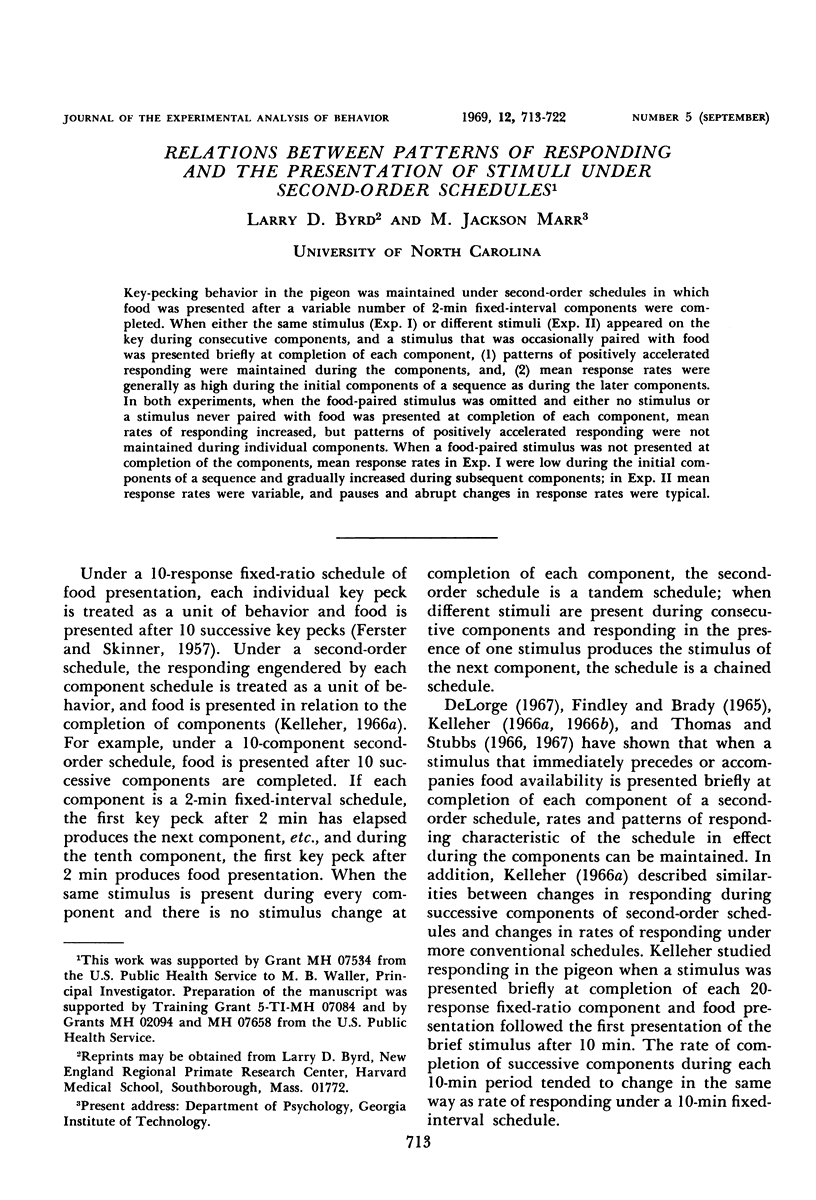

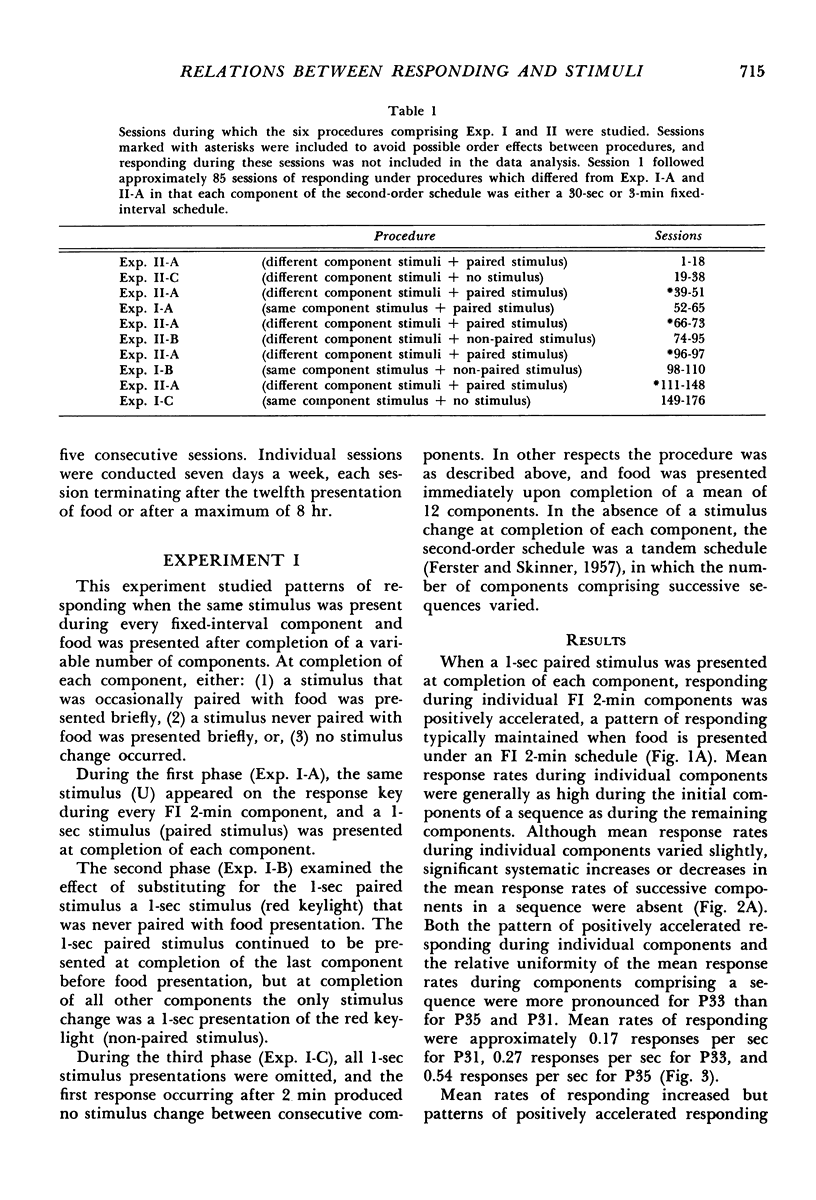
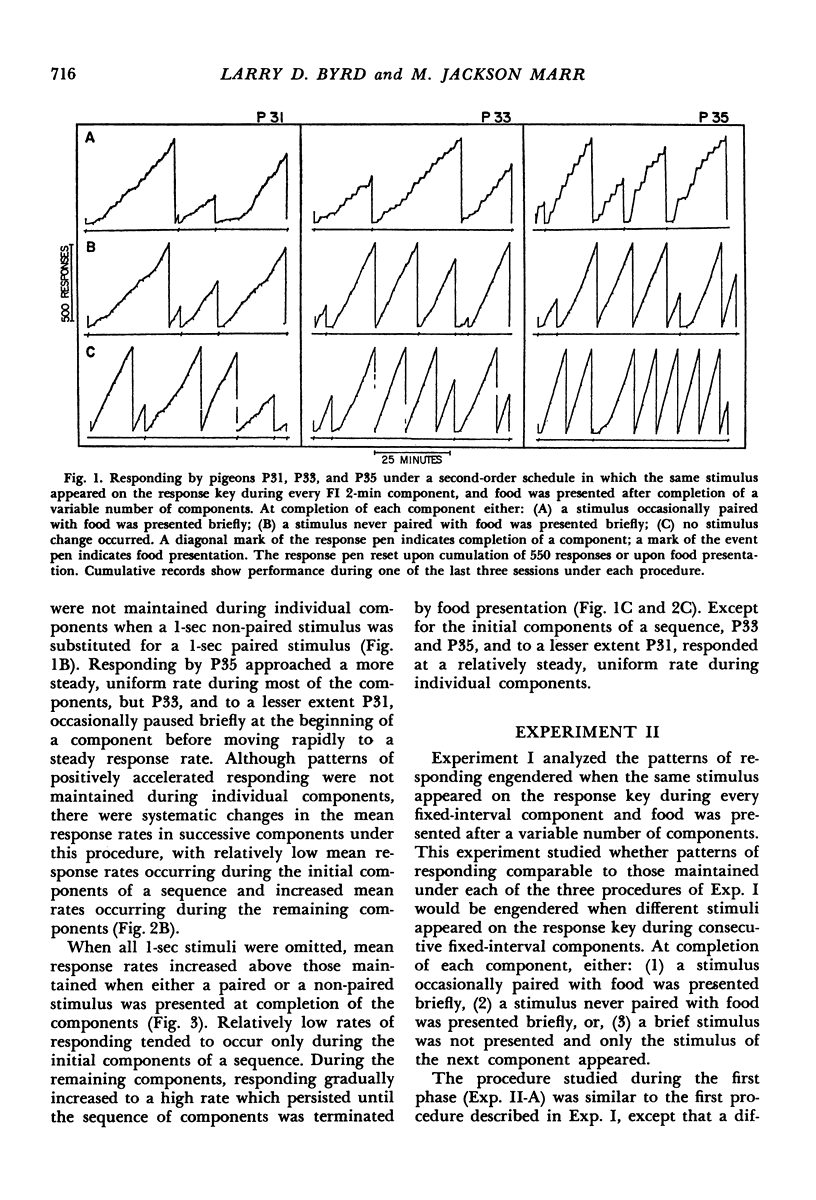
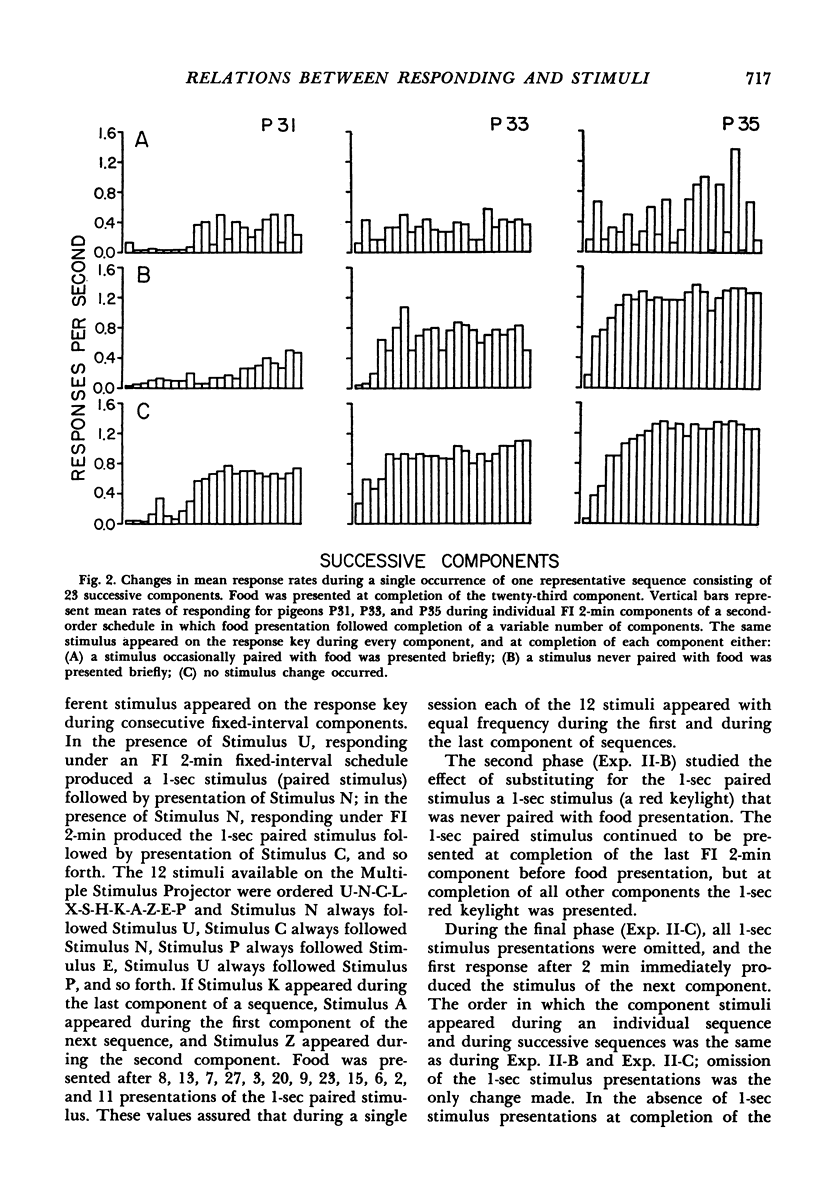
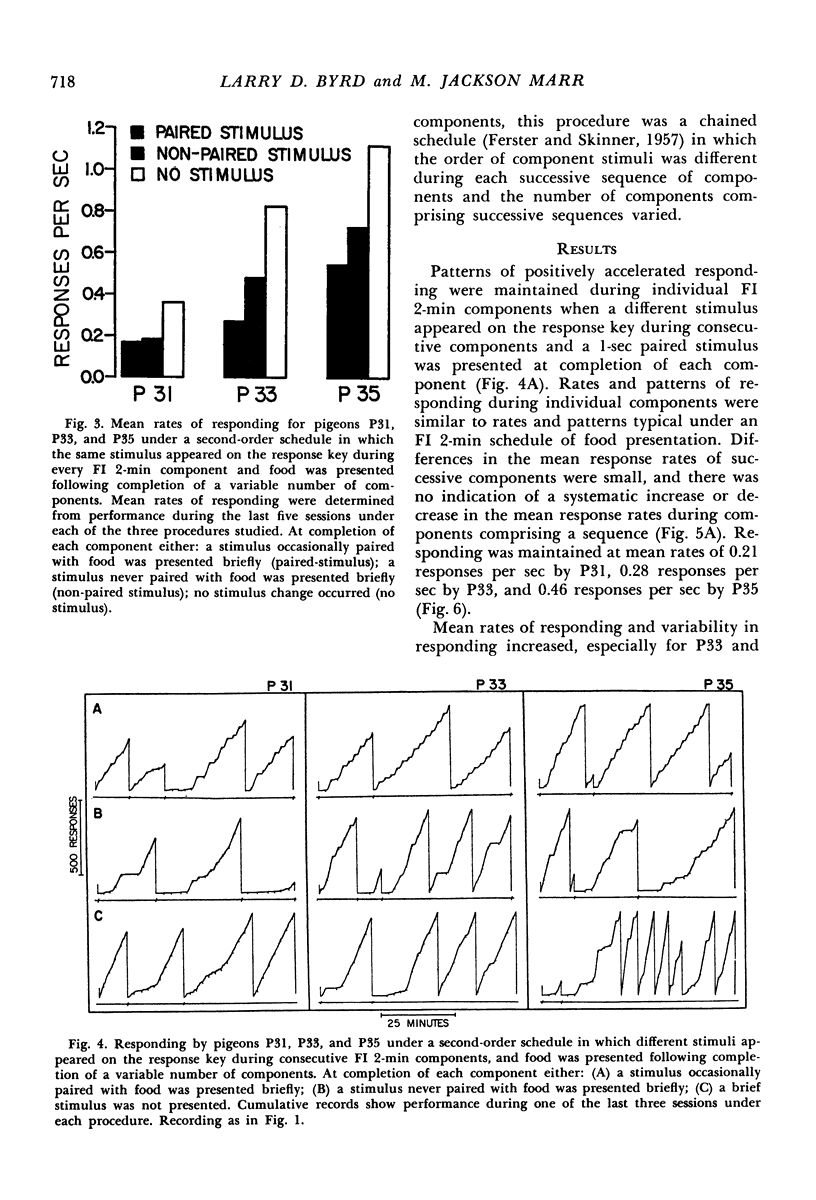
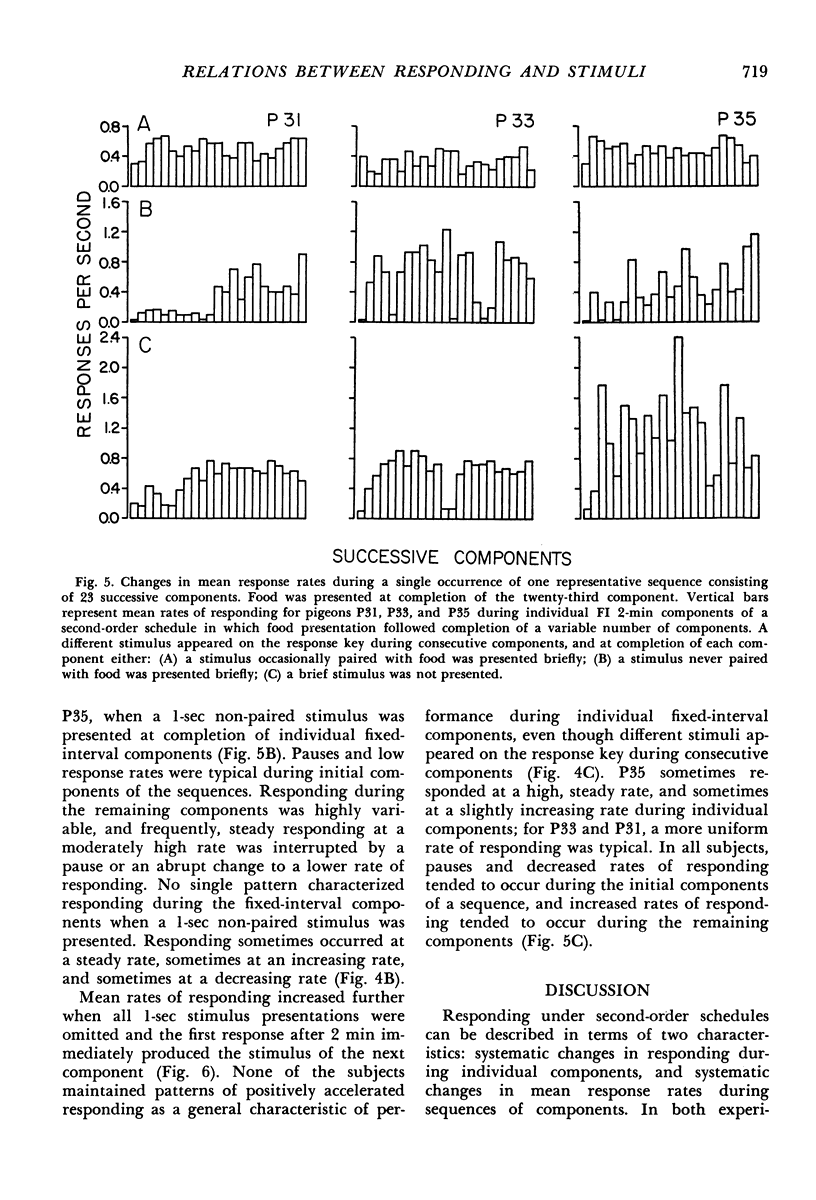

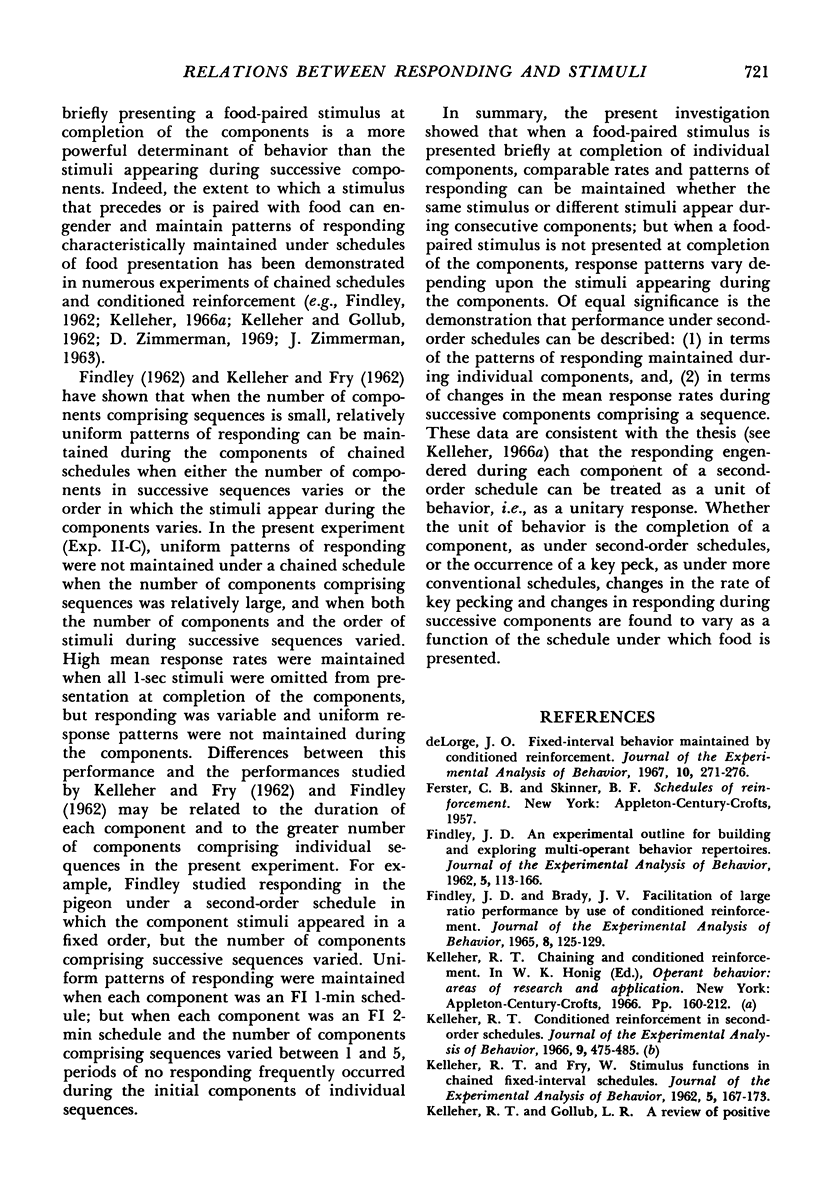
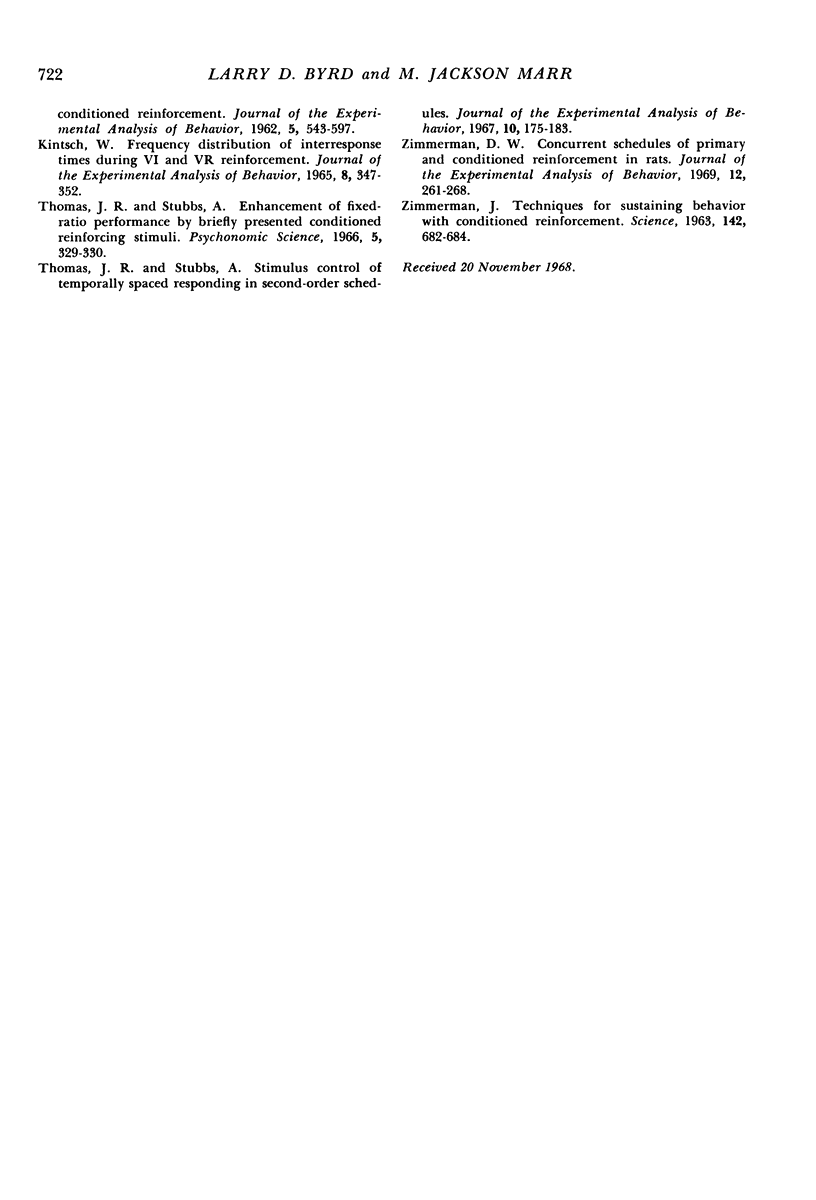
Selected References
These references are in PubMed. This may not be the complete list of references from this article.
- De Lorge J. Fixed-interval behavior maintained by conditioned reinforcement. J Exp Anal Behav. 1967 May;10(3):271–276. doi: 10.1901/jeab.1967.10-271. [DOI] [PMC free article] [PubMed] [Google Scholar]
- FINDLEY J. D. An experimental outline for building and exploring multi-operant behavior repertoires. J Exp Anal Behav. 1962 Jan;5(Suppl):113–166. doi: 10.1901/jeab.1962.5-s113. [DOI] [PMC free article] [PubMed] [Google Scholar]
- FINDLEY J. D., BRADY J. V. FACILITATION OF LARGE RATIO PERFORMANCE BY USE OF CONDITIONED REINFORCEMENT. J Exp Anal Behav. 1965 Mar;8:125–129. doi: 10.1901/jeab.1965.8-125. [DOI] [PMC free article] [PubMed] [Google Scholar]
- KELLEHER R. T., FRY W. T. Stimulus functions in chained fixed-interval schedules. J Exp Anal Behav. 1962 Apr;5:167–173. doi: 10.1901/jeab.1962.5-167. [DOI] [PMC free article] [PubMed] [Google Scholar]
- KELLEHER R. T., GOLLUB L. R. A review of positive conditioned reinforcement. J Exp Anal Behav. 1962 Oct;5:543–597. doi: 10.1901/jeab.1962.5-s543. [DOI] [PMC free article] [PubMed] [Google Scholar]
- KINTSCH W. FREQUENCY DISTRIBUTION OF INTERRESPONSE TIMES DURING VI AND VR REINFORCEMENT. J Exp Anal Behav. 1965 Sep;8:347–352. doi: 10.1901/jeab.1965.8-347. [DOI] [PMC free article] [PubMed] [Google Scholar]
- Thomas J. R., Stubbs A. Stimulus control of temporally spaced responding in second-order schedules. J Exp Anal Behav. 1967 Mar;10(2):175–183. doi: 10.1901/jeab.1967.10-175. [DOI] [PMC free article] [PubMed] [Google Scholar]
- ZIMMERMAN J. TECHNIQUE FOR SUSTAINING BEHAVIOR WITH CONDITIONED REINFORCEMENT. Science. 1963 Nov 8;142(3593):682–684. doi: 10.1126/science.142.3593.682. [DOI] [PubMed] [Google Scholar]
- Zimmerman D. W. Concurrent schedules of primary and conditioned reinforcement in rats. J Exp Anal Behav. 1969 Mar;12(2):261–268. doi: 10.1901/jeab.1969.12-261. [DOI] [PMC free article] [PubMed] [Google Scholar]


